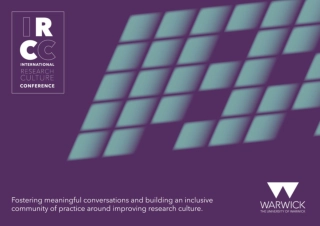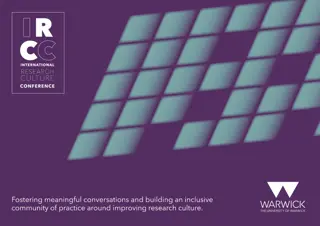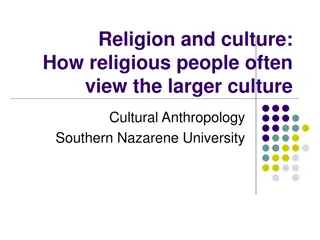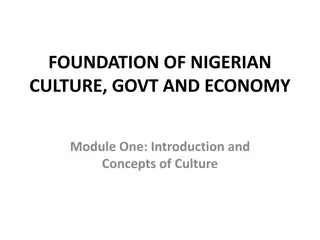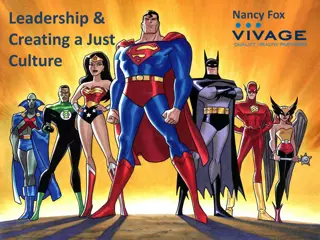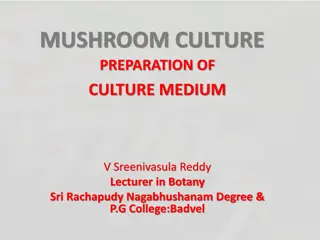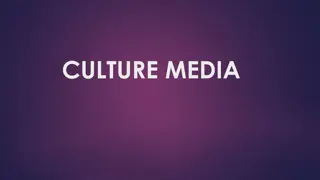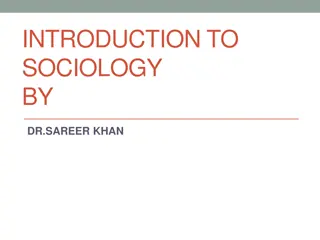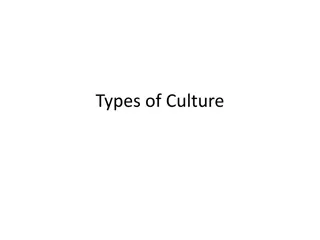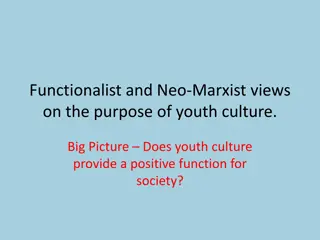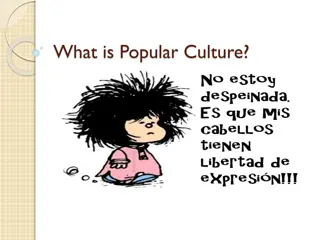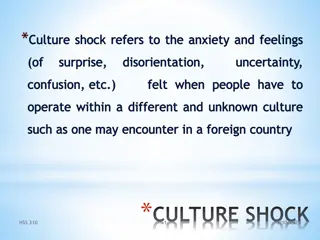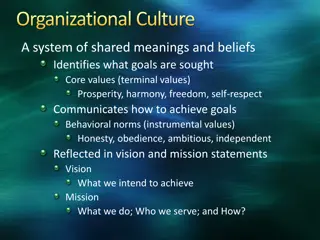CULTURE
The 4Cs Framework emphasizes strengthening conceptual understanding through social, cultural, linguistic, and cognitive processes, highlighting the crucial role of culture in CLIL. It delves into the macro and micro levels of culture, impacting content conceptualization and discourse functions. Culturally embedded learning environments in CLIL foster intercultural understanding, requiring appropriate conditions for learners to interact effectively. Integrating culture in CLIL topics enhances inclusivity and intercultural teaching, paving the way for deeper cultural awareness and competence development.
Download Presentation

Please find below an Image/Link to download the presentation.
The content on the website is provided AS IS for your information and personal use only. It may not be sold, licensed, or shared on other websites without obtaining consent from the author.If you encounter any issues during the download, it is possible that the publisher has removed the file from their server.
You are allowed to download the files provided on this website for personal or commercial use, subject to the condition that they are used lawfully. All files are the property of their respective owners.
The content on the website is provided AS IS for your information and personal use only. It may not be sold, licensed, or shared on other websites without obtaining consent from the author.
E N D
Presentation Transcript
CULTURE An overview
Introduction The 4Cs Framework is based on the principle that strengthening and deepening a learner s conceptual understanding requires social, cultural, linguistic and cognitive processes. The components of the framework are: Content, Cognition, Communication and Culture.
The 4th C Culture has two interrelated strands. CULTURE First, at the macro level, culture encompasses making transparent societal values and cultures embedded in home and other contexts. Culture is the filter through which individuals interpret their world. CLIL requires learners to develop intercultural understanding which impacts on all the other Cs. Source: https://pluriliteracies.ecml.at/Portals/54/GrazG roup4CsTranscript.pdf
CULTURE (2) Second, at the micro level, in CLIL each subject discipline or related theme has its own culture with its own content and ways of communicating and interpreting the world. These subject-specific norms impact on the way in which content is conceptualised and the kind of discourse functions used to support these processes. It requires learners to think and act like a scientist or like a geographer or like a global citizen. Source: https://pluriliteracies.ecml.at/Portals/54/GrazG roup4CsTranscript.pdf
Culture in CLIL Therefore, culture in CLIL is an embedding principle, as any learning skill should contain a cultural awareness, either in content, language or cognition. It is also related to the student s context.
Culture in CLIL (2) For CLIL learners to go beyond cultural awareness, they will need appropriate learning conditions. CLIL learners will need to interact with each other and with others. They will need to interact in classrooms where intercultural learning is embedded in a curriculum which supports and develops cultural competences and attitudes through using specific tools. Teachers can raise their own awareness of reflecting on their own practice in order to identify and use a range of tools in their own teaching to construct learning environments conducive to intercultural understanding.
A transparent approach to the 4th C leads to the inclusion of culture in CLIL topics which might be less inclusive in L1 settings. Intercultural teaching If CLIL is to seriously engage with intercultural learning, then all training programmes must address the notion of intercultural teaching. This does not mean that it will lead to intercultural learning but an understanding of intercultural teaching is a starting point. Source: Mar a Luisa Carri -Pastor Content and Language Integrated Learning: Cultural Diversity
What does it imply for us as teachers? From a teacher s perspective this demands a two-level approach: - Self as teacher -critical reflection and analysis. What does it mean to be a Spanish maths CLIL teacher working through the medium of English? How do I relate to other math teachers? And to Spanish teachers of Geography? What are the similarities and differences in our pedagogies and methods? My CLIL teaching and its impact on CLIL learners -an exploration of approaches to CLIL teaching including planning and evaluating goals and activities conducive to intercultural learning. - According to Cummins (2005) transformative pedagogy involves collaborative working with other groups of learners and teachers in different cultural, linguistic and geographical contexts eg through joining curricular projects and sister-class links.
Culture which culture? Culture has been divided into two different concepts by Seelye (1984). These concepts are known as Big C and Small C . The Big C includes literature, music, film and symbols (Clandfield, 2008: p. 4); whereas the Small c is focused on typical food, clothing, values, activities, manners and practices of a group (Seyle, 1984: 19). It is also possible to find K culture which is referring to behaviours or customs which may seem unusual or curious, mostly based on stereotype (Clandfield, 2008: p.4).
Intercultural Competence We can also make our teaching rely on what Byram (1997) termed as intercultural competence , understood as the ability to communicate and operate effectively with people from another culture (p.5).
So, whats the recipe for success? Introducing culture in the CLIL classroom is not only about food, festivals and holidays. It s about preparing learners to participate effectively in the multilingual, multicultural globalized knowledge society. And that entails preparing them to interact in the multiple spheres of Cultural interaction: their own culture (expressing/explaining ); other cultures (accessing/understanding) and intercultural/transcultural interaction (successful functioning).
Examples from our lesson plans Pointillism -to appreciate how the impact of a small number of people in a specific culture can influence art currents on a global scale. Feudalism -to acquire a global understanding of the unfair social relationships in feudal times. Guess who -to raise awareness and spotlight a gaping and dangerous gender data gap in science. All of these aspects can be explored through the use of mind maps and conceptual frameworks to first raise awareness. They can be recycled later in class discussions to develop that intercultural awareness.
Examples from our lesson plans (2) In the Geography lesson plan, much of the material is appropriate for intercultural exchange, as students can investigate their own use of resources with the data they collect making excellent reading and discussion material for a partner class in another city, country or continent. In the Numeracy lesson plan you can get learners investigating shapes and colours in their immediate surroundings to share with partner groups in another country and offer them insights into shapes and colour in different cultures. Resources on history, culture and the arts offer many inroads into cultural comparison. Learners can investigate festivals or look at famous people and events in world history from different cultural perspectives. Speaking of the arts, students can learn about music in different countries, which can open the way to investigating its origins and/or history.
One specific example: CEIP Sigeiro Going beyond individual initiatives in our own class, we might want to take a whole-school approach and in this regard it could be interesting to see one school, CEIP Pluriling e de Sig eiro, in Galicia (Spain). This school started with small short-term projects (pen-pal exchanges, interviewing pilgrims, etc) to then embark on European projects whereby local students engaged with other classes around the world to conduct joint webquests, give oral presentations, code, design a logo, share experiences, and dance. As you look at their projects, think about the specific competences that are being targeted: linguistic (communication and mediation), cultural, ICT, etc.
To know more The Basque government, like the European Commission, has culture as a key competence; you can read an example of this in terms of curriculum planning in the Basque country in the article CLIL and Competence-based learning a practical example: INEBI and BHINEBI by Lui Garc a Gurrutxaga. Also:https://www.academia.edu/4768500/The_CLIL_Approach_A _Gateway_to_interculturality_in_the_classroom
References Byram, M. (1997) Teaching and assessing intercultural communicative competence. Clevedon: Multilingual Matters. Chlopek, Z. (2008). The Intercultural Approach to EFL Teaching and Learning . English Teaching Forum, 4: 10-27. Retrieved from: http://americanenglish.state.gov/files/ae/resource_files/08-46-4- c.pdf Clandfield, L. (2008) Culture in ELT: Which C? Whose C? Teachers of English as a Second Language of Ontario, 34/3: 1-8. Retrieved from: http://www.teslontario.net/uploads/publications/contact/ContactSummer2008.pdf Seelye, H. N. (1984) Teaching Culture. Chicago IL: National Textbook Company.


